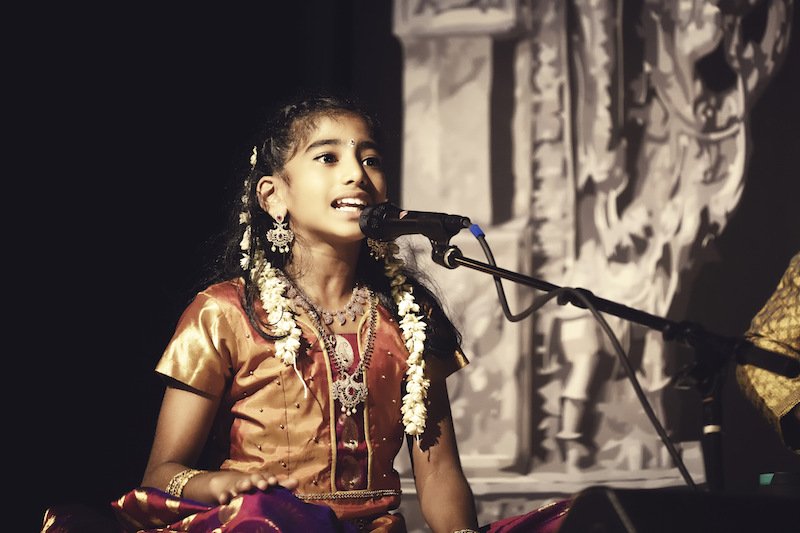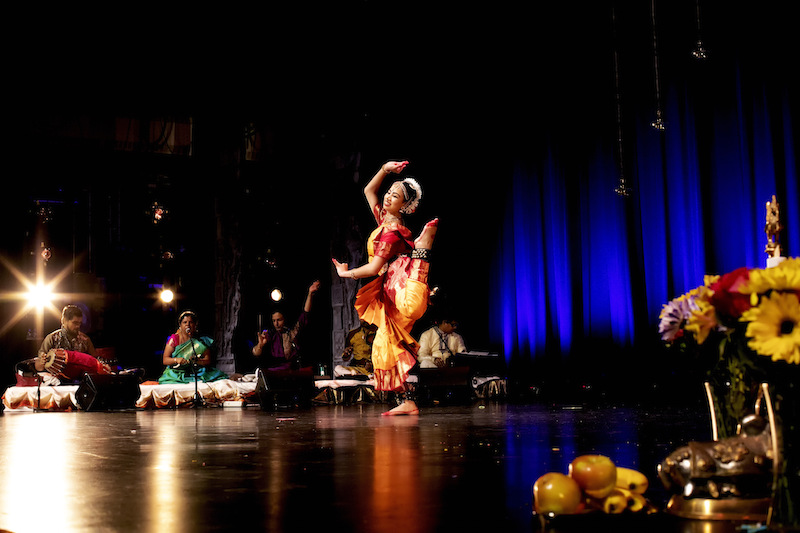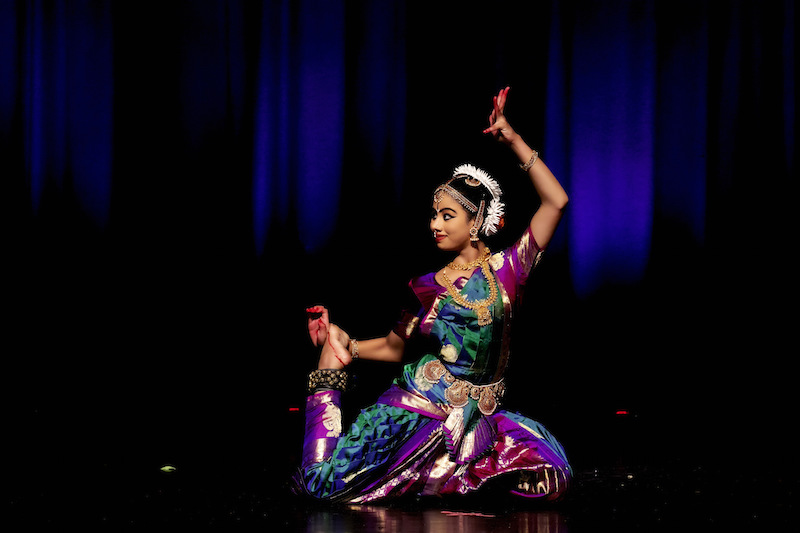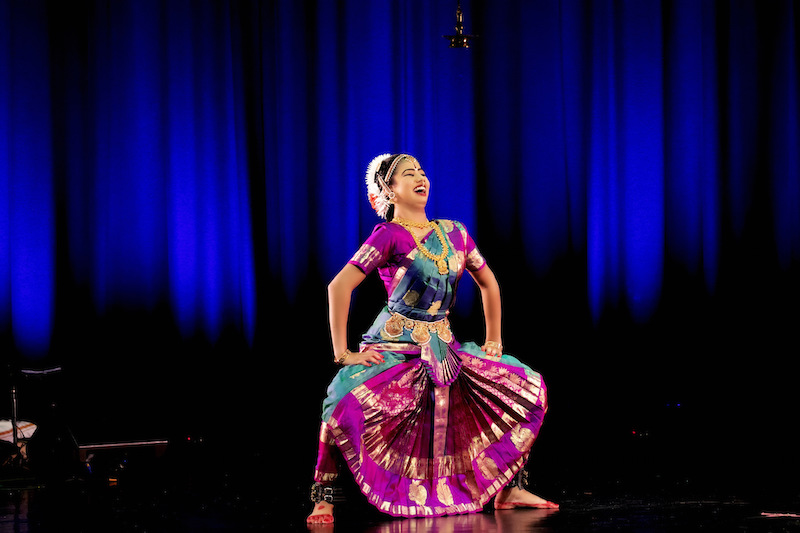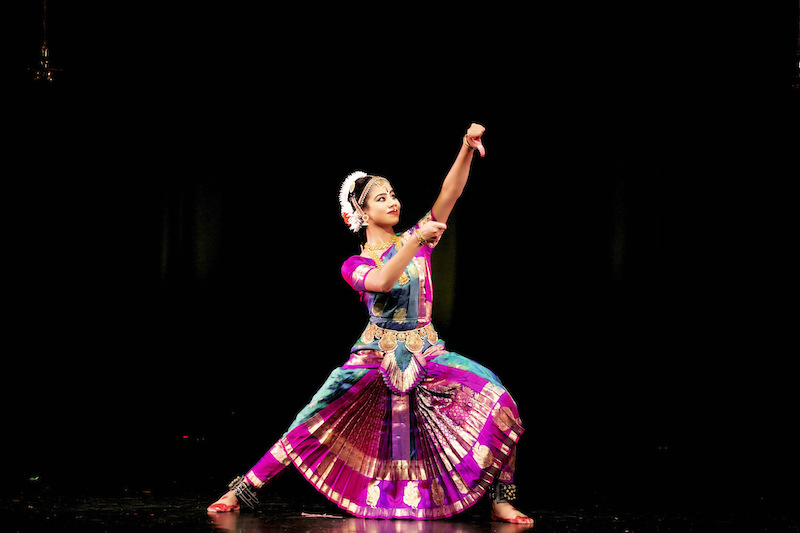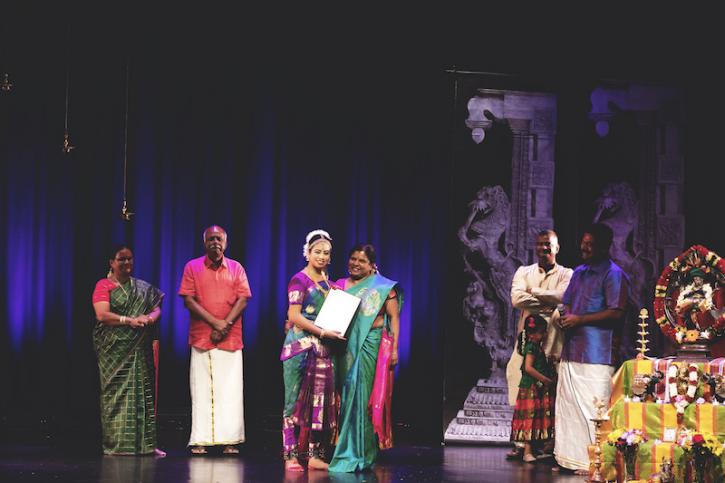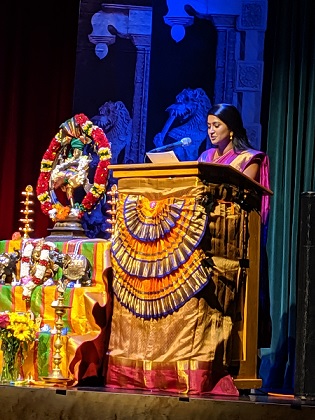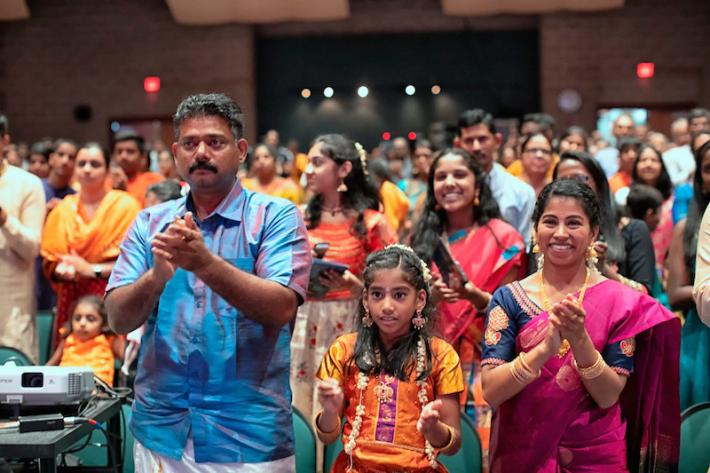Contribute
| Arangetram: Jeyashakthi Kannan |
Sandhiya Krishnan
08/28/2019
Bharatanatyam Arangetram of Jeyashakthi Kannan. The dance is a poem of which each movement is a word. Bharathanatyam is one of the oldest classical dance forms of India that originated in the southern state of Tamilnadu. Like most other Indian dance forms it is a blend of nrtta - the rhythmic elements, nritya - the combination of rhythm with expression and natya - the dramatic element. Bharathanatyam is also an acronym for Bhava (expression), Raga(melody) and Tala (rhythm). The dance themes are usually devotional or based on Hindu mythology and the music is in classical Carnatic style. Jeyasakthi Kannan, a junior in Lowell Catholic high school performed a laudable Bharathanatya Arangetram on 18th August 2019 at Littleton, MA. As a child, her parents noticed her natural inclination for music and dance. When she turned 5 they enrolled her for dance lessons under the guidance of Smt. Ranjani Saigal of Eastern Rhythms. Since then Jeyasakthi has been actively involved in the cultural programs and has also performed classical and folk dances in many cultural events and competitions. Her talent, dedication and love for the art form, her teacher’s expertise and her family’s encouragement have made her the accomplished dancer she is today. Jeyasakthi’s teacher Ranjani Saigal, the director of the Eastern Rhythms, has been teaching in the Boston area for many years. She had her initial training in Bharatanatyam under Guru Manu Chaudhary and has received advanced training in Bharatanatyam from other leading gurus. She has also learned Kuchipudi from Smt Lakshmi Ramkumar. She has trained many of her students to perform their arangetrams . She has also choreographed several dance dramas such as Krishna, Sillapadhikaram, Navarasa Nayika, SooraSamharam, and many others. The evenings performance started with the pushpanjali an offering of flowers in worship. She offered salutations to her guru, the musicians and the audience, then invoked a prayer to Lord Nataraja for a smooth execution of the program. This was followed by Vinayaka Kavithuvam. Kavithuvams are ancient poetry sung to tune. This Kavithuvam dance is a fast-paced invocatory dance where the dancers offers their prayers to Lord Ganesha and seek his blessings to make the event a success. In a Kavithuvam, chollukattus (rhythmic syllables) are intertwined with the lyrics of the song. Thus it has both nritta (footwork) and abhinaya (expressions) components in its choreography. The jathiswaram is pure nritta, rhythmic movements. Jathis are the syllables to keep the beat, swarams are notes sung for a particular melody. It takes the dancer through increasingly complex rhythmic patterns at varying speeds. Jeyasakthi executed the piece with precision and beauty. Next Jeysakthi performed a beautiful dance depicting the love story between Parvathi and Shiva in the song Kanchadalayadakshi. It was a delight for the audience to watch Jeyasakthi performing in a single dance, a shy Parvathi, the angry Shiva and a Cunning madana. Jeyasakthi showed the same determination and hardwork in her dance that Parvathi Devi showed to marry Shiva. Before getting to the varnam, Jeyasakthi’s “best and only sister†Yuvethi Kannan sung a classical rendition of “Moolathara Moorthy†in her beautiful voice. She entertained the audience with her fun and witty speech as well. The varnam is the centerpiece of the recital. It exhibits in full measure all the elements of this art form. It alternates complex and difficult pure dance sequences with pieces of interpretive dance that bring out the emotions in the song. Jeyasakthi performed a Devar Munivar Varnam. Its distinctive feature is that it has sollukattu or jathis as part of the muthay swaram. Jeyasakthi utilized this part of the varnam to portray the musical instruments in the dance program as well as the dancer adorning herself for the show. Jeyasakthi enthralled the audience with her mastery over all the elements of Bharatanatyam . They especially appreciated her expertise in nritta. As the dance progressed the rhythmic sequences got faster and more complex. She executed each one of them beautifully without missing a beat. The highlight of the Varnam was the depiction of the story of Mahabali where Jeyasakthi presented beautifully the three characters of Mahabali, his Guru and Vamana. Madhura Nagarlio, the ever popular song, depicting Krishna and his gopika’s was by far the highlight of the evening. Jeyasakthi played Krishna and Gopika in turn. Adoration and love for her beautiful lover, frustration at his mischief are some of the emotions she portrayed as gopika. This universal theme touched a chord with the audience. She also depicted beautifully the playful scene where Krishna plays pranks on her. Though a popular song, the choreography was wonderfully unique. The next performance Masil Ayodhil beautifully enacts the story of Ramayana. The song is sung by a mother as a lullaby where she tells the story of Ramayana to her child. Jeyasakthi beautifully portrayed each and every scene of Ramayana. She bought tears to the eyes of the audience when she acted the scene of Sita crying out helplessly for Lord.Rama when Ravana was capturing her to take her to Lanka. Guru. Ranjani’s nattuvangam added energy to the already high energy dance performance. It brought goosebumps to the audience when hearing her nattuvangam in high voice. The thillana is the grand finale of the recital. It showcases the dancers ability to do nritta, or pure rhythmic dance movements. Happiness, joy and ecstasy are the emotions expressed. Jeyasakthi chose to portray Lord.Muruga in her thillana. The recital concluded with the mangalam, a prayer to Lord.Muruga with a popular song of Kandha Shasti Kavasam. Jeyasakthi once again offered salutations to her guru, the musicians and the audience and performed the namaskara. The evening was fine proof of Jeyasakthi’s talents as a accomplished dancer. She showed that she had all the elements required to complete the arangetram. She also confirmed, through her dance, that she has imbibed the mythology, the religion, the music of India and is very much at ease with her cultural roots. It was an enjoyable event for the guests, mainly friends and family from all over the Boston area. Some of them came up to the stage to delight the audience with insights into Jeyasakthi the person. They talked about the effort that went into organizing the event and the people that made it all possible. It was also an opportunity for Jeyasakthi to acknowledge all that her family, teacher and friends have meant to her. The evening concluded with everyone sitting down to dinner specially catered by Madars Grill. There was a general consensus that Jeyasakthi was well on her way to establish herself as a fine dancer. Credits Makeup - Geetha Anand & Sathya Ramesh
-Mata Hari
The Arangetram is a key milestone in a dancers training. It literally means to ascend the stage. The dancer completes basic training, and is presented to the audience by the teacher. She performs her first solo margam or full Bharathanatyam repertoire. This effectively states that she is now not merely an amateur, but a budding professional.
Jeyasakthi’s dance recital was accompanied by a very gifted group of musicians, her guru Ranjani Saigal in nattuvangam, Sri.Babu Parameshwaran - Vocal, Sri.Ganeshiyer Ramachandran Naveen- Mridangam, Sri. Pavalan Subramanian- Violin, Sri. Vadekethil Krishnakutty Sivakumar in Flute.
Videography- Saravanan Meyyappan
Brochure Design - Kolam Media Creations
You may also access this article through our web-site http://www.lokvani.com/
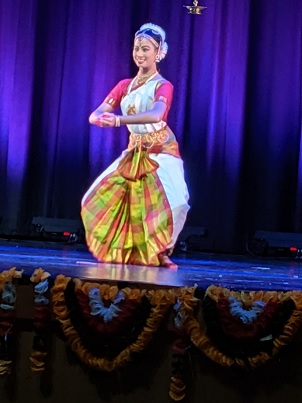
.jpg)
